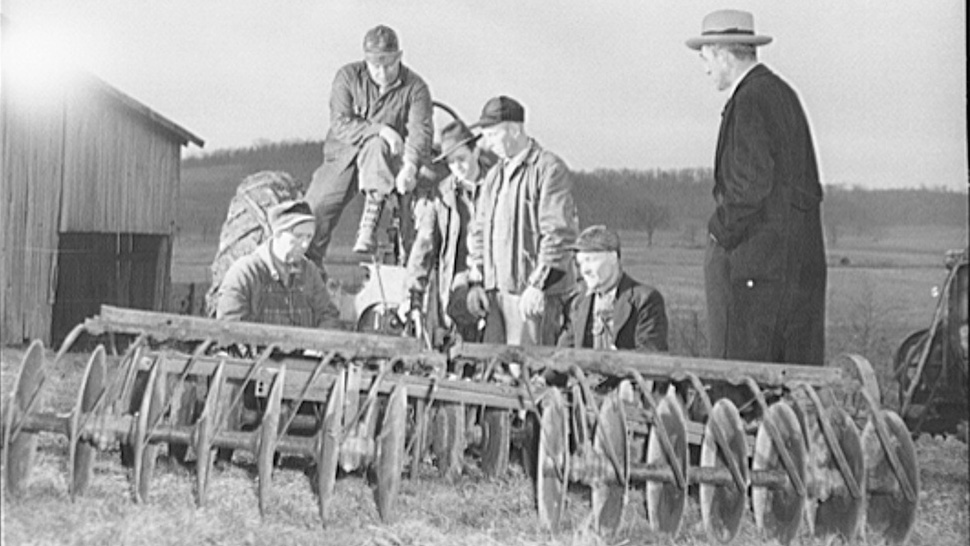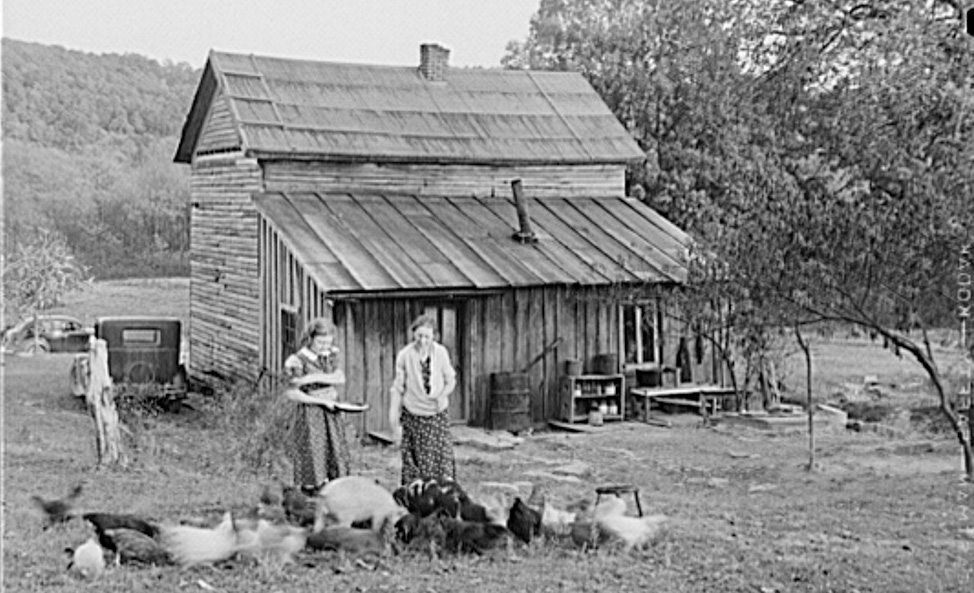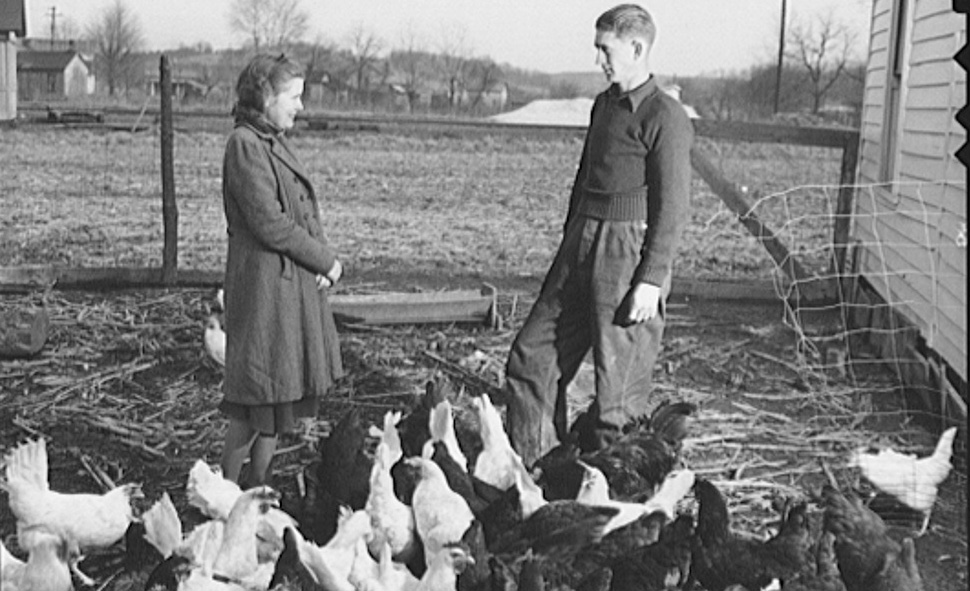HISTORY
Almost as long as its recorded human history, the land of Southern Ohio has been farmed.
Even before written human history began, the land of Southern Ohio has been farmed. The history of farming in Southern Ohio began an estimated 5,000 years ago, long before European colonization. Early native peoples in Southern Ohio, such as the Adena and Hopewell cultures, had advanced farming practices. More modern native tribes continued to grow crops like corn, squash, and beans.

“Rio Grande, Gallia County, Ohio. Farm labor trainees at Rio Grande College learning how to attach disc plow to tractor. Mr. Glines, FSA (Farm Security Administration) representative at the school is looking on.” Photographed by John Vachon in March 1943. Credit to the Library of Congress: LC-USW3-015383
When European settlers came to Ohio in the mid-to-late 17th century, they mostly planted corn, wheat, and other various grain crops. For much of its history, the landscape’s rolling hills and thick forests prevented larger-scale farms from existing in Appalachian Ohio. However, commercial logging and land clearing resulted in more expansive farms during the 19th century. The range of farm products expanded to include tobacco, hemp, apples, potatoes, and livestock over the next century. Even after farmland receded in the mid-20th century, agriculture has remained the leading industry in the state of Ohio; experts say that prime farmland covers 44 percent of Ohio land.
Small, family-owned farms make up the vast majority of farms in Southeast Ohio. In Athens County, 97 percent of all farms are family-owned. Similarly, in Meigs County, 99 percent of all farms are family-owned. The average farm size in Athens County is 144 acres, compared to the Ohio state average of 206 acres per farm. Unfortunately, small family farms across the nation have faced growing challenges. Southern Ohio farms are not immune to the rising costs of running a farmstead business. In fact, farms in Southern Ohio have been directly impacted by these struggles. According to the 2017 Census of Agriculture, on average, Athens County farm expenses rose by 19% in just five years.

“Lansing and daughter feeding chickens. They are FSA (Farm Security Administration) borrowers.” Ross County, Ohio. Photographed by John Vachon in November 1940. Credit to the Library of Congress: LC-USF34-061448

“Rio Grande, Gallia County, Ohio. Reed and Evelyn Hall have their own chickens on dairy farm where Mr. Hall was employed as a result of the training program.” Photographed by John Vachon in March 1943. Credit to the Library of Congress: LC-USW3-015384
Near the Southeast Ohio town of Albany, there are three family-owned farms, with each farmer trying to thrive in their own way. The Chase Family Farm and Integration Acres are in Athens County, whereas the Blaney Family Farm is near the border in Meigs County. Each story represents a different experience of farming in Southeast Ohio. Charles Chase was raised on his family’s hay farm, and he dutifully has carried on the traditions of his forefathers his entire life. The Blaney Family moved to their vegetable farm only three years ago, but they strive to foster connection and health in their community. Chris Chmiel runs Integration Acres, a farmstead creamery and pawpaw processor, as well as being a community organizer and an Athens County Commissioner.
In all three stories, these farmers have an active relationship with the land on which they live and work. They use it to support themselves and feel more connected with other people, whether those people are their ancestors or their customers at the Athens Farmer’s Market.
